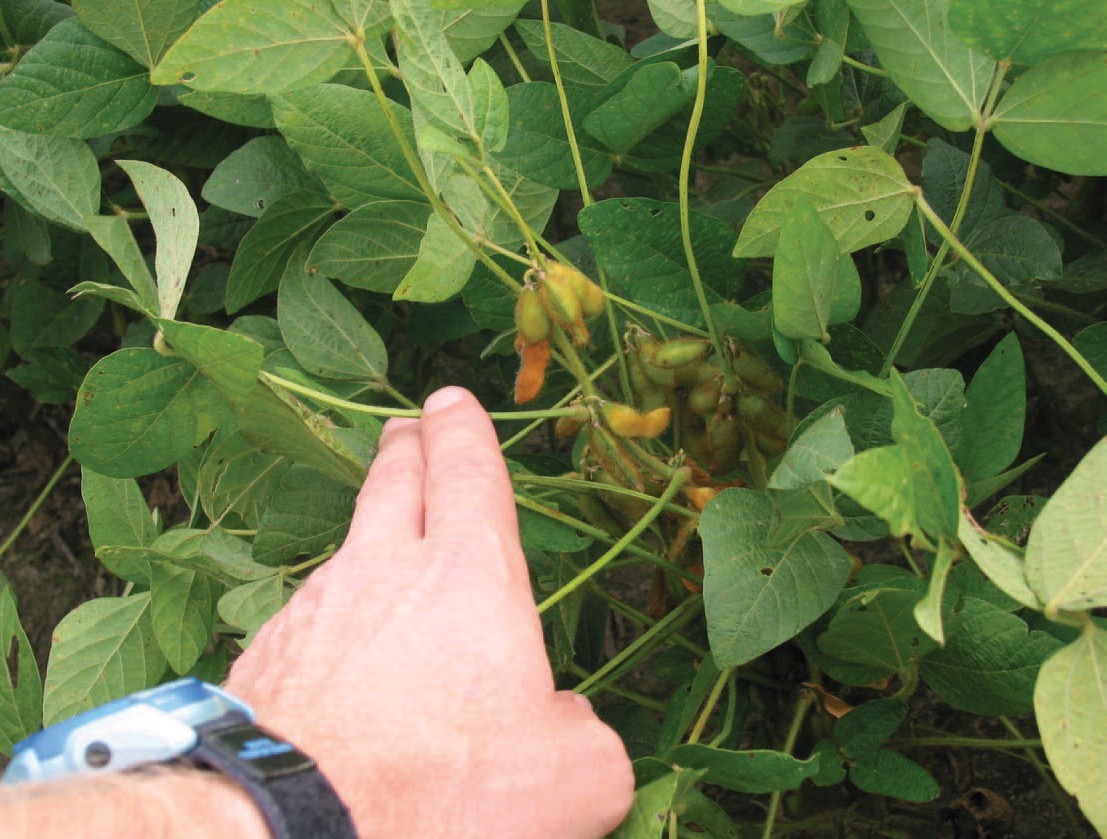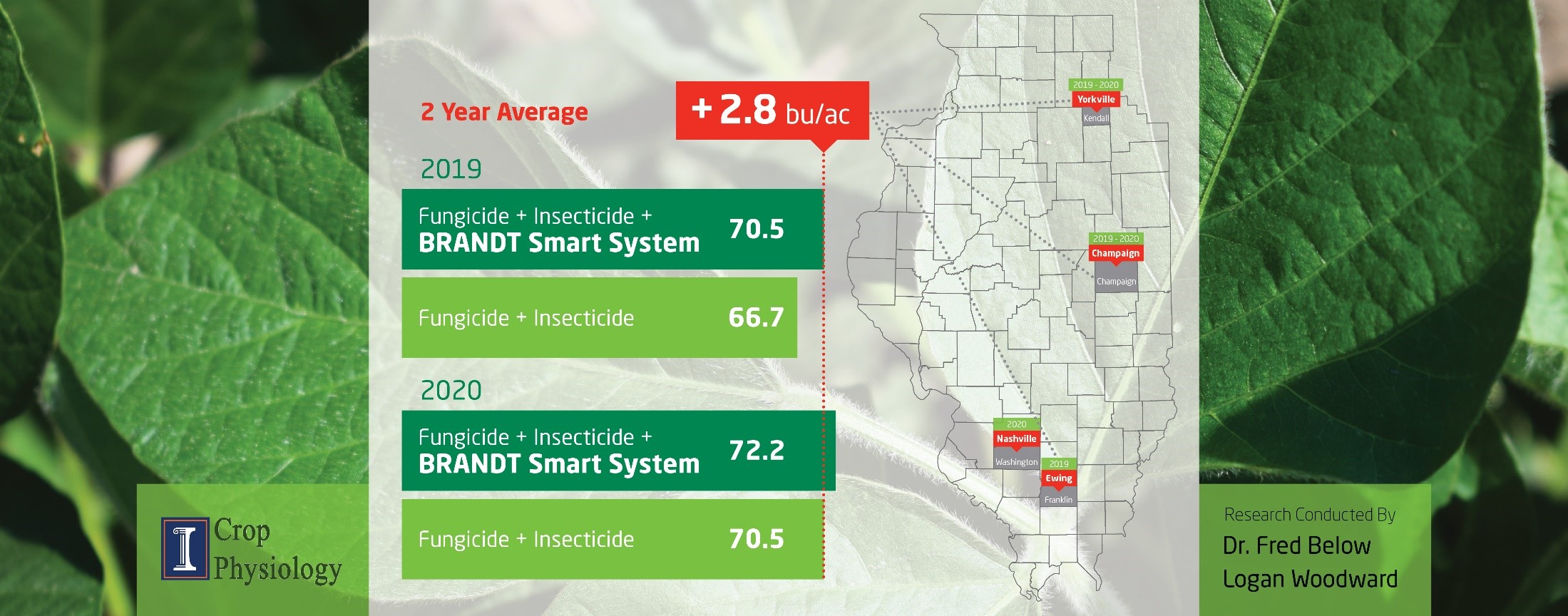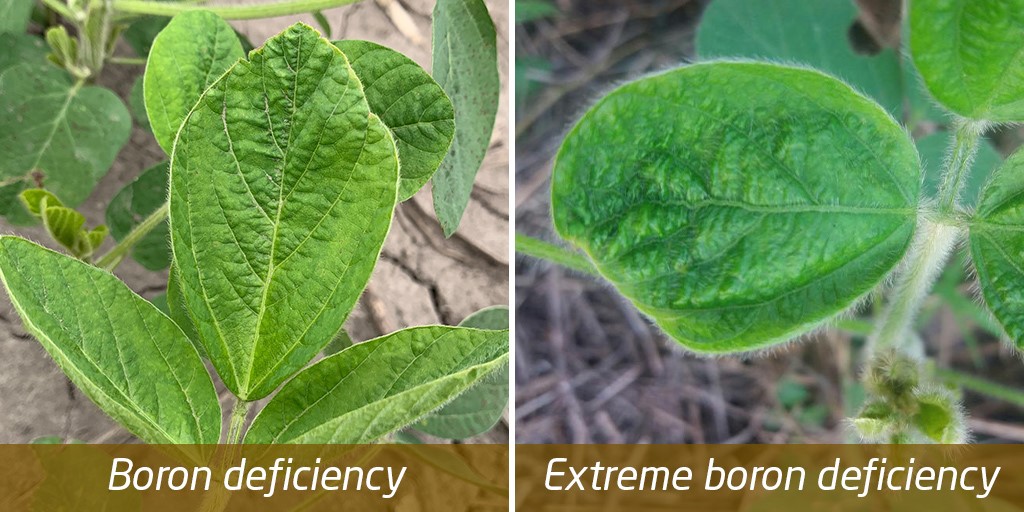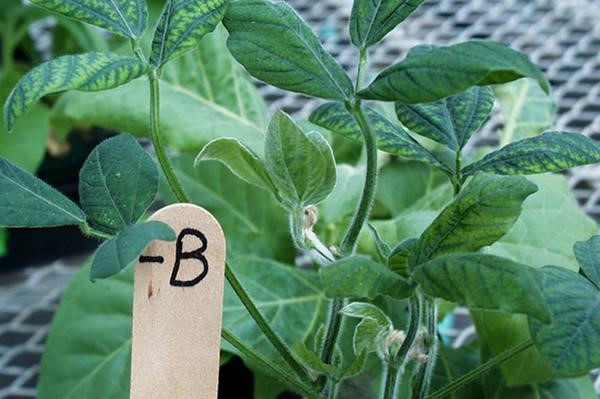Foliar Boron Applications to Boost Soybean Yield
June 28, 2021
The Role of Boron in Soybean Growth and Development
Boron is essential for all plant growth and is known to promote flowering, pollen germination, grain fill, and yield where B is applied near flowering. Soybeans, like all legumes, have a high B requirement. Foliar sprays are especially important for those plant species in which B is immobile; B uptake from the soil can be insufficient to supply these plants’ needs at critical periods of growth and reproductive development. Soybeans are considered one of the B-immobile species.
The role of boron in soybeans include:
- Proper root growth
- Increased root nodule development for nitrogen (N) fixation
- Increased branching and flowering
- Decreased bloom abortion resulting in increased pod set
- Better seed development and grain yield.
If making a supplemental B application, one should also evaluate potassium (K). Peak potassium uptake is between R2 and R3 in soybeans and it is not uncommon to have short-term transient potassium during peak demand. Further depending on regional soil types, the additions of Zn, Mn and Fe may also be beneficial. The addition of Molybdenum (Mo) may also be beneficial for nodule health and nitrogen assimilation.

Boron deficient soybean pods; Slaton, U. of Arkansas, 2003; Foliar Boron Bumps Yields - Fluid Fertilizer Foundation, 2007
Conditions Leading to Boron Deficiencies
Soybeans are grown in a wide variety of geographies and soil types. Maximum availability of boron relative to soil pH is between pH 5 to 7. Soil test levels between 0.5 to 1.5 ppm are typically considered adequate.
Boron deficiencies most often occur in:
- Limed, calcareous or alkaline soils. These soils have absorption and retention properties for boron reducing their availability
- Coarse textured soils (sands, loamy sands, sandy loams). Boron deficiencies are especially pronounced in high rainfall areas (greater than 25 inches) where boron may have been leached from the soil profile. Over-irrigation may cause the same results.
- Drought can decrease B availability in soil as lack of moisture may slow organic matter decomposition. In addition, B moves to the plant root by mass flow, which is restricted in dry soils.
The first signs of boron deficiency occurs in the roots. Root tips die causing new roots to initiate causing a rosette appearance. Foliar symptoms include death of the shoot growing point and subsequent proliferation of lateral shoots with brittle petioles.
Desired Boron Tissue Test Values
The desired range for tissue test levels are between 30 to 60 ppm boron prior to or at bloom stage.
Key Application Timings and Rates
Because boron is important for pollination and pod set, the recommended timing for B applications on soybeans is early bloom. The typical practice is to include boron with fungicide sprays. In severe boron deficiencies it may advisable to make additional foliar sprays through pod development. Boron can be applied in the soil at planting, however, boron can be highly mobile in soils and prone to leaching.
There is a correlation to increased soybean responsiveness to boron applications in high yielding, intensively-managed fields. Foliar boron applications have the ability to set more pods, however for this to translate to improved yield soybeans need adequate inputs to fill pods.
Although foliar boron applications and deficiencies during early vegetative stages are not as common, it can have an impact on root growth and nodulation in soybeans. In fields that have a history of boron deficiencies, early vegetative applications should be considered.

-
Early vegetative timings may be advantageous in areas of low boron availability.
-
R1 to R3 is most common boron application timing. Peak demand for boron occurs during early reproductive stages.
BRANDT Products
BRANDT Smart System® products contain chemistry that cross-links the boron molecule to allow it to move to the growing points much more efficiently. This leads to lower application rates, higher nutrient efficiency and better return on investment.
Key products include:
- BRANDT Smart B-Mo (BRANDT Smart System Technology)
- BRANDT Smart K B (BRANDT Smart System Technology)
- BRANDT Liquid Boron (10% B)
Trial Data

Pictures of Boron Deficiencies in Soybeans

2019, Sangamon County, IL, BRANDT

Mid-Season Soybean Boron (B) Deficiency, NC STATE, Carl Crozier
